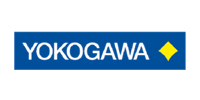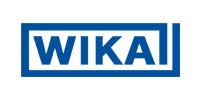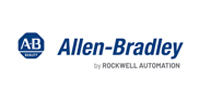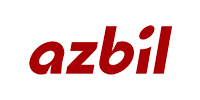Temperature Measuring Instrument
Gas & Oil
In the oil and gas industry, industrial measuring instruments are crucial for ensuring the safety, efficiency, and accuracy of operations. These instruments are used in various stages, including exploration, extraction, refining, transportation, and storage. Below are some key measuring instruments commonly used in oil and gas:
Key Industrial Measuring Instruments in Oil and Gas
1. Flow Meters
Flow meters are among the most critical instruments in oil and gas operations, used to measure the volume or mass of liquid or gas moving through pipelines.
Types:
- Coriolis Flow Meters: Measure mass flow directly and are highly accurate for liquids and gases.
- Turbine Flow Meters: Measure the velocity of the fluid and are often used for measuring large volumes of crude oil or natural gas.
- Ultrasonic Flow Meters: Use sound waves to measure flow and are ideal for non-invasive measurement, especially in pipelines.
- Differential Pressure Flow Meters (Orifice Plates): Create a pressure drop to calculate flow and are widely used in gas measurement.
Use: Flow meters are essential for monitoring production rates, controlling output in refining processes, and ensuring accurate billing.
2. Pressure Transmitters
Pressure transmitters measure the pressure of liquids and gases in pipelines, vessels, and processing units.
Types:
- Absolute Pressure Transmitters: Measure pressure relative to a vacuum, used in processes where atmospheric pressure changes need to be accounted for.
- Differential Pressure Transmitters: Measure the difference between two points, often used in flow measurement and level monitoring.
- Gauge Pressure Transmitters: Measure pressure relative to atmospheric pressure and are used in various stages of refining and storage.
Use: Ensures operational safety by preventing over-pressurization in pipelines, storage tanks, and reactors, which could cause leaks or explosions.
3. Temperature Sensors
Temperature control is critical in oil and gas refining, processing, and storage. Sensors are used to monitor and regulate temperatures to ensure the integrity of processes.
Types:
- Thermocouples: Simple and rugged sensors that measure temperature across a wide range of applications.
- Resistance Temperature Detectors (RTDs): Offer more accurate and stable readings for monitoring process temperatures.
- Infrared Thermometers: Non-contact sensors for measuring surface temperatures in pipelines or tanks.
Use: Temperature sensors help in optimizing refining processes (e.g., cracking, distillation) and ensure safe handling and storage of volatile hydrocarbons.
4. Level Sensors
Level sensors measure the amount of liquid or gas in storage tanks, reactors, or pipelines.
Types:
- Radar Level Sensors: Use radar waves to measure the distance to the liquid’s surface; ideal for volatile environments.
- Ultrasonic Level Sensors: Measure levels using sound waves, suitable for non-contact measurement in tanks.
- Capacitance Level Sensors: Measure changes in capacitance to determine liquid levels, often used in tanks storing petroleum products.
- Magnetic Float Sensors: Use a magnetic float system to detect the level of liquids, mainly used for oil storage tanks.
Use: These sensors help avoid overflows, dry running, and maintain continuous operation during storage and transportation of oil, gas, and other hydrocarbons.
5. Gas Analyzers
Gas analyzers are used to detect and measure the concentration of gases, ensuring safety and compliance with environmental regulations.
Types:
- Infrared Gas Analyzers: Measure specific gas concentrations like CO2, CO, and hydrocarbons using infrared absorption.
- Electrochemical Sensors: Detect gases such as oxygen, hydrogen sulfide (H₂S), and carbon monoxide.
- Catalytic Sensors: Used for combustible gases like methane (CH₄).
- Photoionization Detectors (PID): Measure volatile organic compounds (VOCs).
Use: Gas analyzers are critical in monitoring emissions, ensuring safe working conditions by detecting harmful gases like H₂S, and optimizing combustion processes.
6. Vibration Sensors
Vibration sensors monitor the health of rotating machinery such as pumps, compressors, and turbines, which are widely used in oil and gas.
Types:
- Accelerometers: Measure vibration and are used to detect imbalances or misalignment in rotating machinery.
- Proximity Probes: Monitor shaft movement in large rotating machinery like turbines.
- Velocity Sensors: Detect changes in vibration speed and are often used for machinery diagnostics.
Use: Early detection of machinery failure, reducing downtime and preventing costly breakdowns.
7. Density Meters
Density meters measure the density of liquids or gases in pipelines, which is important for both production and processing.
Types:
- Coriolis Density Meters: Measure mass flow and density in one instrument and are highly accurate for crude oil or natural gas.
- Nuclear Density Meters: Use a radiation source to measure density in pipelines and vessels.
Use: Density meters ensure accurate flow measurement, blending, and product quality control in refining processes.
8. pH and Conductivity Meters
These instruments are used in water treatment processes, corrosion monitoring, and chemical processing.
pH Meters: Measure the acidity or alkalinity of liquids used in processing or water treatment.
Conductivity Meters: Measure the electrical conductivity of fluids to detect the concentration of dissolved solids, essential in desalination and chemical processes.
Use: These meters help optimize chemical dosing, prevent corrosion, and maintain proper water treatment systems.
9. Hydrocarbon Leak Detectors
Hydrocarbon leak detectors are specialized instruments used to detect leaks in pipelines, storage tanks, and processing facilities.
Types:
- Optical Leak Detectors: Use infrared or laser technology to detect hydrocarbon leaks.
- Ultrasonic Leak Detectors: Detect sound frequencies generated by leaking gas or liquid.
Use: Ensures quick detection of leaks to prevent environmental damage, improve safety, and reduce financial losses.
10. Valve Positioners
Valve positioners are used to control and monitor the position of valves in oil and gas systems, ensuring accurate control of flow, pressure, and temperature.
Types:
- Pneumatic Valve Positioners: Use air pressure to adjust the valve position.
- Electro-pneumatic Positioners: Convert electronic signals to control air pressure for precise valve positioning.
Use: Optimizes process control in refineries, gas plants, and offshore platforms.
Conclusion:
In the oil and gas industry, the use of industrial measuring instruments is essential for ensuring the safety, efficiency, and reliability of operations. Accurate measurement of parameters such as flow, pressure, temperature, and gas composition enables operators to optimize production processes, prevent costly accidents, and comply with environmental regulations. Investing in high-quality instruments is critical for maintaining a competitive and sustainable operation in the oil and gas sector.













